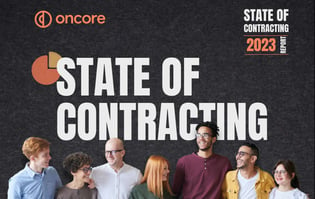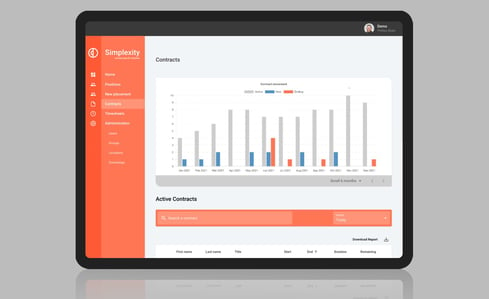AI Joins the Recruitment Conversation
Imagine an engineer in Melbourne submitting a resume crafted by AI to a recruiter who is also using AI to evaluate candidates and generate responses. This isn’t futuristic fiction; it’s happening now in Australia. In 2025, AI is transforming how both job seekers and recruiters operate. Around 65% of Australian candidates use AI for tasks like resume writing, and 92% of hiring managers rely on AI at some stage of recruitment. This dual adoption signals a significant shift in how talent is sourced, assessed, and hired.
This new dynamic also introduces a new kind of competition: not just agency versus agency, but human-AI partnerships versus traditional workflows. The speed, accuracy, and reach that AI enables are redefining how recruiters differentiate themselves and how candidates navigate the market.
Recruitment Leaders Navigate Change
Australia’s recruitment environment is becoming more competitive. Candidate expectations are higher, regulations are stricter, and agencies are under pressure to deliver results in a tight labour market. With unemployment hovering around 4%, agencies must respond faster and smarter than ever.
There is also a cultural shift underway. Recruitment is no longer seen solely as a transactional process - it’s becoming more consultative. Clients expect insight, not just resumes. Candidates want a journey, not just a job offer. AI helps make that shift possible by handling volume and complexity while recruiters focus on building trust and relationships.
AI on the Front Lines
Recruiters are increasingly using AI in sourcing and screening. Natural Language Processing (NLP) tools analyse resumes and job descriptions to shortlist candidates in seconds. Agencies leveraging AI in these stages report time-to-fill improvements of up to 10% and ROI gains of 1.5–3x per placement. AI also proactively identifies passive candidates by scanning public data and predicting job-switch readiness.
Resume matching, the most common AI use case, now surfaces candidates with transferable skills that manual screening may miss. Australian employers using AI tools report a 30–40% drop in cost-per-hire and save nearly two hours per recruiter per day. AI chatbots are handling FAQs and interview scheduling, enhancing candidate experience and freeing recruiters to focus on relationship-building.
Candidate engagement also benefits from AI. Imagine an AI assistant following up with candidates after interviews, collecting feedback, or nudging them to complete tasks. These small automations enhance the candidate journey and demonstrate professionalism and responsiveness from the agency.
Compliance Made Easy
Recruitment in Australia involves complex compliance requirements. AI now automates document collection, visa and licence checks, and monitors expiry dates. Agencies save time and avoid legal risk. Mid-sized firms using AI can save up to 200 recruiter hours per year, redirecting efforts toward strategic activities. AI also helps track contract end dates and suggests redeployment opportunities, aligning with the growing contingent workforce model.
AI doesn’t just speed up compliance - it helps recruiters stay ahead of it. Predictive alerts about upcoming licence expirations or changes in visa rules enable proactive responses rather than rushed corrections. This increases recruiter confidence and client satisfaction.
Evolving Candidate Expectations
Candidates are also changing. Many use AI to craft tailored resumes and cover letters—and it works: 96% of Aussie job seekers using AI got callbacks. Candidates expect rapid responses, transparency, and even personalisation in outreach. AI chatbots and customised comms make a strong impression.
Video CVs and digital portfolios are becoming the norm, especially among younger candidates. Recruiters are now expected to accept diverse formats and use AI to analyse video interviews. Ethical concerns around AI are growing too: candidates want transparency on how they’re being evaluated, and fair oversight when AI tools are involved.
Additionally, today’s job seekers are digital natives. They are accustomed to real-time feedback and seamless digital experiences in every other aspect of their lives, from shopping to banking. The hiring process is expected to meet that same standard. Agencies embracing automation are not only meeting expectations but setting themselves apart as progressive employers.
Recruiters: The Human-AI Hybrid
In 2025, recruiters are becoming "hybrid professionals." AI automates admin, provides applicant summaries, and delivers live market insights. Recruiters use this to advise clients, pipeline talent, and make data-backed decisions. With 200+ hours reclaimed annually, recruiters focus more on strategic consultation and high-touch relationships.
AI doesn’t replace recruiters, it enhances them. But it demands new skills: prompt writing, data analysis, and algorithm oversight. Agencies investing in upskilling will stay ahead, while those clinging to old methods risk being left behind.
This hybrid model unlocks new possibilities: talent mapping, workforce planning, and branding are now accessible to every recruiter with the right AI tools. It’s also a morale boost: recruiters can move from task-driven to insight-driven roles, increasing job satisfaction and reducing burnout.
New Frontiers: Predictive and Inclusive AI
Emerging AI use cases include predicting candidate success and team compatibility, developing hiring heatmaps, and providing DE&I audits. AI can detect bias in job ads and flag patterns in selection data. Agencies that adopt these features position themselves as partners in ethical, forward-thinking hiring.
AI is even transforming onboarding. Some agencies use virtual buddies to guide contractors through early days, answer questions, and deliver training at scale, a major advantage in contractor-heavy sectors.
There’s also growing interest in AI-driven internal mobility tools. These systems match existing talent to open roles, helping clients retain employees and optimise workforce utilisation. For recruiters, offering these tools adds long-term value and strengthens client relationships.
Ethical Considerations & Transparency
AI’s potential comes with responsibility. Bias is a real issue: studies show AI can misinterpret non-native accents or diverse resumes. Recruiters must demand transparency from AI vendors and maintain human oversight in decision-making.
Transparency also builds trust. Candidates should know when AI is in play and have recourse if they feel unfairly screened. Informed consent, clear communication, and a human-in-the-loop approach are essential to fair AI use.
Moreover, AI literacy is now a competitive edge. Agencies must understand how AI systems make decisions, how to interpret their outputs, and how to explain these to clients and candidates. This is especially important if AI recommendations influence hiring decisions.
Looking Ahead: The Augmented Agency
Agencies that thrive post-2025 will build "bionic recruiters" and new services like talent intelligence reports, candidate nurturing platforms, and shared analytics dashboards with clients. The best firms will provide predictive hiring support and continuously adapt to new tech.
But AI won’t replace the human touch. It will enhance it. Understanding candidate motivations, advising on fit, and managing nuanced negotiations will always require empathy and experience.
The future agency might look more like a tech-enabled consultancy than a traditional recruiter. Services will extend beyond sourcing into areas like retention strategy, employee engagement, and workforce planning. AI will be the engine, but human insight will remain the driver.
Human + AI is the Future
AI is accelerating recruitment in Australia, but the real transformation lies in how humans harness it. Agencies that blend high-tech with high-touch will outperform. The recruitment revolution is already here and it’s a chance for bold, adaptive firms to lead the way.
The question is no longer whether AI will be part of recruitment - it’s how effectively we use it to elevate the craft of recruiting. Those who embrace change, invest in tools and training, and keep people at the centre of their strategy will define what great recruitment looks like in the years ahead.












_11zon%20(1).jpg?width=302&height=124&name=linkedin-sales-solutions-vqWWOnA6--M-unsplash%20(2)_11zon%20(1).jpg)







